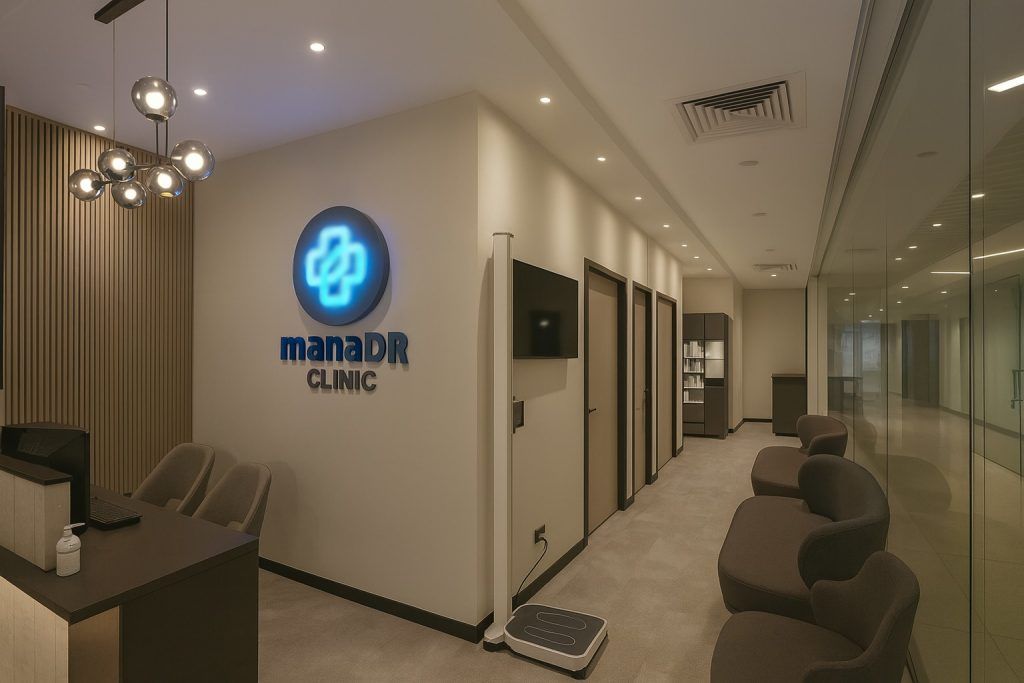Sonder Holdings Inc. (NASDAQ: SOND) is now in full collapse mode. After Marriott International abruptly terminated a 20‑year licensing agreement on 9 November, Sonder announced on 10 November that it would immediately wind down operations and pursue a Chapter 7 liquidation of its U.S. business, with insolvency proceedings planned in the international markets where it operates. [1]
In the days since, the situation has escalated:
- The company has filed for Chapter 7 bankruptcy in the U.S. Bankruptcy Court for the District of Delaware and warned shareholders that trading in SOND is now “highly speculative.” [2]
- Marriott and Sonder are trading accusations in court filings over who bears responsibility for thousands of stranded guests. [3]
- A WARN Act class action has been filed on behalf of roughly 1,000 laid‑off employees, alleging they received no proper advance notice of mass layoffs. [4]
- Industry estimates suggest Sonder’s shutdown is hitting close to 10,000 units globally, as apartment‑style hotels go dark or transition to other operators. [5]
For investors, the key question on 20 November 2025 is no longer whether Sonder can survive, but how little – if anything – will be left for common shareholders once creditors are paid.
SOND stock today: trading in the shadow of liquidation
As of early afternoon on 20 November 2025 (around 13:26 UTC), SOND is trading at about $0.09 per share, with a market cap under $10 million – a breathtaking fall from its roughly $1.9 billion SPAC valuation in 2022. [6]
TipRanks data shows a current market capitalization of about $8.9 million and flags SOND with a bearish technical signal and “Underperform” AI‑driven rating, citing negative profitability and high leverage. [7]
Meanwhile, Sonder’s own bankruptcy‑related disclosure – summarized in an Investing.com write‑up – indicates: [8]
- $205.6 million in principal outstanding under a 2021 note and warrant agreement (as of 30 June 2025)
- $24.54 million outstanding under a 2025 note and warrant agreement
- $5.3 million outstanding under a 2025 loan agreement with Marriott
Those figures sit on top of substantial lease and operating obligations. In a Chapter 7 liquidation, secured and other creditors get paid first; equity is at the very bottom of the waterfall. Sonder itself has cautioned that stockholders may suffer “significant or complete losses” depending on how the case unfolds. [9]
Bottom line for investors on 20 November: SOND now behaves more like an option on remote recovery value than a conventional stock. For most long‑term shareholders, the risk is that common equity ends up worth zero once the liquidation is complete. This article is not investment advice.
How we got here: Marriott pulls the plug, Sonder hits the wall
A partnership that was supposed to save Sonder
Sonder’s story in 2024–2025 was built around one big hope: a 20‑year licensing agreement with Marriott International, announced in August 2024. Under the “Sonder by Marriott Bonvoy” branding, Sonder properties were distributed across Marriott’s powerful reservations platform, with some 140 properties and roughly 7,700 rooms available through Marriott channels by late September 2025. [10]
The deal was pitched internally and to investors as a turning point:
- Sonder would supply stylish, apartment‑style, tech‑enabled units.
- Marriott would bring global distribution, loyalty members and brand trust.
Francis Davidson, Sonder’s cofounder and until mid‑2025 its CEO, later described getting the Marriott deal over the line as “the hardest thing” he’d ever done – and said he was “shocked” by how fast the company then unraveled. [11]
Marriott ends the agreement “due to default”
On 10 November 2025, CoStar reported that Marriott had terminated its licensing agreement with Sonder, citing Sonder’s “default” and removing all Sonder inventory from its channels. [12]
CoStar’s analysis and SEC filings highlight key stress points: [13]
- Repeated late SEC filings, including a delayed Q2 2025 Form 10‑Q that triggered a Nasdaq deficiency notice in May 2025.
- Continued net losses and negative free cash flow, even as revenue topped $621 million in 2024 and RevPAR and occupancy improved.
- Leadership turbulence: cofounder‑CEO Francis Davidson stepped down in 2025, with board chair Janice Sears stepping in as interim CEO; the CFO also departed earlier in the year.
Marriott’s own release (summarized in third‑party coverage) said the agreement was “no longer in effect” and emphasized that its “immediate priority” was supporting guests currently in Sonder properties or holding future reservations. [14]
The November shock: wind‑down, bankruptcy filing, global shutdown
Sonder’s 10 November wind‑down announcement
On 10 November 2025, Sonder issued a formal press release (now mirrored on Nasdaq) announcing that it would “complete winding down operations immediately” and expected to initiate Chapter 7 liquidation proceedings for its U.S. business, with insolvency processes to follow internationally. [15]
Key points from that announcement:
- Sonder blamed “severe financial constraints,” including prolonged and expensive integration challenges with Marriott’s technology and booking systems. [16]
- The company said these integration issues led to unexpected costs and a sharp revenue decline from Marriott‑related channels. [17]
- After exploring financing, a sale, and other strategic options, the board concluded that liquidation was the only viable path. [18]
Interim CEO Janice Sears said the team was “devastated” to reach the point where liquidation was necessary, praising employees for a decade spent “redefining hospitality” across 37 cities in nine countries. [19]
Formal Chapter 7 filing and Nasdaq delisting warning
By 14 November, Sonder and several subsidiaries had filed voluntary Chapter 7 petitions in Delaware. The same SEC‑linked disclosure, summarized by Investing.com, added more color: [20]
- The bankruptcy filing triggered defaults across multiple credit agreements, increasing interest costs.
- Sonder expects a Nasdaq notice of ineligibility for continued listing and has no intention to appeal, meaning SOND will be delisted and likely migrate to over‑the‑counter status.
- The company explicitly warned that trading in SOND during the bankruptcy process is highly speculative and shareholders could lose most or all of their investment.
For the hospitality sector, industry outlets like Business Travel News and TravelMole framed this as a global shutdown touching nearly 10,000 units across 37 cities, marking one of the most dramatic failures in the short‑term rental / hybrid hotel segment to date. [21]
Human impact: stranded guests and suddenly jobless staff
Guests told to pack up mid‑stay
The Marriott–Sonder breakup and sudden shutdown have produced scenes of chaos across multiple cities:
- Fast Company reported that guests in cities such as Chicago and London were told to leave in the middle of their stays, in some cases during a winter storm, with heating reportedly cut and access revoked. [22]
- Boston.com described travelers in Boston arriving to find their reservations effectively void, forced to scramble for last‑minute (and often more expensive) accommodation. [23]
- In Detroit and other markets, local coverage highlighted guests being forced out of Sonder‑run hotels after the bankruptcy announcement. [24]
Business Insider’s reporting, based on interviews with guests and employees, paints a picture of front‑desk staff learning about the shutdown at the same time as guests. One Montreal guest said he was told to vacate by an employee whose “last task” was to inform people they had to leave, right before losing his own job. [25]
Employees: confusion, no severance, and now a lawsuit
For staff, the collapse has been just as abrupt:
- Business Insider spoke with multiple employees who said they first heard about the Marriott termination and shutdown via news reports or crying guests, not internal communication. [26]
- An internal memo signed by interim CEO Sears informed workers they would be paid only through 10 November and that, given the company’s financial situation, no severance pay would be offered. [27]
- Employees reported losing system access shortly after receiving termination notices, while still helping guests check out. [28]
On 18 November, Bloomberg Law reported that former employee Rasheeda Herring filed a proposed class action under the federal WARN Act, alleging that Sonder terminated roughly 1,000 workers without the required 60‑day advance notice. The suit, filed in the Delaware bankruptcy court, seeks back pay and benefits for the affected employees. [29]
If successful, WARN Act claims would add another layer of unsecured liabilities on top of Sonder’s already heavy debt load.
Marriott vs. Sonder: new allegations in court filings
New filings from Marriott, reported by CoStar and Hotel Dive on 19 November, deepen the controversy around how Sonder handled its final days: [30]
- Marriott alleges that Sonder suggested it might file a “free‑fall” Chapter 7 case and shut down operations abruptly, potentially locking thousands of guests out of rooms – including rooms containing medications, passports and other critical belongings.
- The filing claims Sonder sought to use guest safety as a bargaining chip to obtain additional funding for its wind‑down, essentially pressuring Marriott to step in financially to prevent an immediate operational collapse.
- Marriott says it had to terminate the licensing agreement and invoke emergency measures to contact guests, rebook them, restrict new bookings, and keep customer support going, especially after Sonder allegedly abandoned its own customer support channels and redirected callers to Marriott.
- Marriott also claims Sonder owes it more than $17.6 million, including unamortized “key money” and other costs and fees. [31]
Sonder has not publicly responded in detail to these allegations yet, beyond its earlier statement that integration challenges with Marriott were a key driver of its financial distress. [32]
Financial backdrop: from “improving metrics” to insolvency
It’s tempting to see Sonder’s failure as a sudden event, but the underlying financial story has been deteriorating for years.
2024: revenue growth, but big losses and thin cash
Sonder’s 2024 full‑year results looked, on the surface, like progress: [33]
- 2024 revenue: $621 million (up 3% year‑over‑year)
- Net loss: $224 million, narrower than 2023 but still substantial
- Q4 2024 RevPAR: $180 (up 19% YoY), occupancy 85%
- Total cash and restricted cash at year‑end: $72 million, of which $51 million was restricted
Even with improving RevPAR and occupancy, the company remained deeply unprofitable, with adjusted EBITDA negative and a large lease‑heavy portfolio to support.
2025: liquidity maneuvers and red flags
Throughout 2025, a series of moves and warnings signaled growing distress: [34]
- Liquidity boost: In August 2025, Sonder raised about $24.54 million via promissory notes plus warrants, with the notes maturing in 2026 – a short‑term fix for a long‑term structural issue.
- Leadership transition: Co‑founder CEO Francis Davidson stepped down, and board chair Janice Sears became interim CEO.
- Nasdaq deficiency notice (May 2025): Sonder received notice for failing to timely file its Q1 2025 Form 10‑Q, underscoring internal reporting and control challenges.
- Ongoing losses: Q1 2025 filings showed negative adjusted EBITDA of about $56.7 million, continuing a pattern of heavy operating losses despite revenue scale. [35]
By late 2025, external analyses – including Rental Scale‑Up and Skift – were highlighting how Sonder’s master‑lease, asset‑heavy model collided with a tech‑startup growth narrative: fixed lease costs, volatile occupancy, and a capital‑intensive global footprint proved difficult to reconcile with shrinking investor appetite and rising interest rates. [36]
What the collapse means for stakeholders
For guests and travel partners
- Existing bookings: Guests with future Sonder bookings should assume those reservations will not be honored, especially in the U.S., and should work directly with credit card providers, OTAs, or – where applicable – Marriott to seek refunds or alternative lodging. [37]
- On‑the‑ground experience: Travelers are reporting everything from orderly relocations to being locked out mid‑stay, depending on city, building, and which partner (if any) stepped in. [38]
For landlords and cities
Sonder’s shutdown leaves thousands of units in limbo. Landlords now must:
- Re‑tenant or re‑flag buildings that were configured for serviced apartments.
- Resolve unpaid rent or damages claims through the bankruptcy process.
Cities where Sonder had a significant footprint – from Montreal and San Francisco to London and Barcelona – may see ripple effects in short‑term rental supply, hotel competition and local employment. [39]
For equity and debt investors
- Secured lenders and noteholders will fight over the value of Sonder’s remaining assets, including any recoverable leasehold interests, furniture, fixtures, and tech/IP. [40]
- Common shareholders sit at the bottom of the capital structure; historic SPAC‑era valuations (around $1.9 billion) are effectively irrelevant in a Chapter 7 context. [41]
Bigger picture: what Sonder’s bankruptcy says about the sector
Analysts and industry commentators are already treating Sonder’s collapse as a cautionary tale for tech‑enabled, master‑lease hospitality models: [42]
- Hospitality isn’t software
A sleek app and centralized operations can’t fully offset on‑the‑ground realities: cleaning, maintenance, staffing, and guests who still expect hotel‑level support. - Master leases are structurally risky
When a company carries lease downside but doesn’t own the real estate upside, margins can disappear quickly in a downturn. - SPAC‑era valuations were often detached from fundamentals
Sonder went public via a SPAC with Gores Metropoulos II in January 2022, raising roughly $310 million and debuting at a near‑unicorn valuation. [43]
The market now has a clearer view of how fragile those assumptions can be. - Human cost matters
Beyond charts and cap tables, thousands of guests and workers were caught in the crossfire – displaced mid‑stay or left jobless with minimal notice. That reputational damage spreads beyond a single brand and raises questions about safeguards in fast‑scaling hospitality models. [44]
What to watch next
As of 20 November 2025, here are the key storylines to follow around Sonder Holdings (SOND):
- Progress of the Chapter 7 case in Delaware: appointment of a trustee, asset sales, and early indications of creditor recoveries. [45]
- WARN Act and other litigation, including potential follow‑on suits from landlords, guests, or additional employees. [46]
- Marriott’s positioning post‑Sonder: how it reallocates inventory (e.g., Homes & Villas, traditional hotels) and whether it pursues other hybrid‑hospitality partners. [47]
- Impact on peers in the short‑term rental and “aparthotel” space, particularly those relying on master leases and SPAC‑era funding.
For now, Sonder Holdings is effectively finished as an operating company. What remains is a complex unwind – and a set of lessons for investors, operators, and regulators navigating the intersection of real estate, hospitality, and high‑growth tech narratives.
This article is for informational purposes only and does not constitute investment, legal, or tax advice. Always do your own research or consult a licensed professional before making financial decisions.
References
1. www.nasdaq.com, 2. www.investing.com, 3. www.costar.com, 4. news.bloomberglaw.com, 5. www.travelmole.com, 6. skift.com, 7. www.tipranks.com, 8. www.investing.com, 9. www.investing.com, 10. www.costar.com, 11. www.businessinsider.com, 12. www.costar.com, 13. www.costar.com, 14. www.costar.com, 15. www.nasdaq.com, 16. www.nasdaq.com, 17. www.nasdaq.com, 18. www.nasdaq.com, 19. www.nasdaq.com, 20. www.investing.com, 21. www.businesstravelnews.com, 22. www.fastcompany.com, 23. www.boston.com, 24. www.crainsdetroit.com, 25. www.businessinsider.com, 26. www.businessinsider.com, 27. www.businessinsider.com, 28. www.businessinsider.com, 29. news.bloomberglaw.com, 30. www.costar.com, 31. www.costar.com, 32. www.nasdaq.com, 33. www.businesswire.com, 34. www.businesswire.com, 35. www.quiverquant.com, 36. www.rentalscaleup.com, 37. www.fastcompany.com, 38. www.businessinsider.com, 39. www.nasdaq.com, 40. www.investing.com, 41. skift.com, 42. www.rentalscaleup.com, 43. investors.sonder.com, 44. www.businessinsider.com, 45. www.investing.com, 46. news.bloomberglaw.com, 47. www.hoteldive.com










